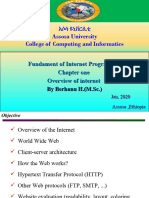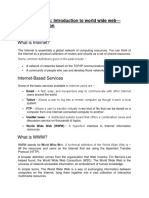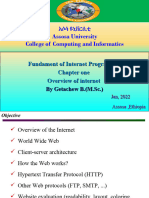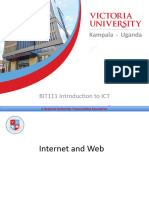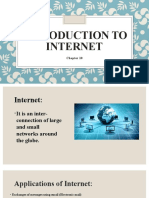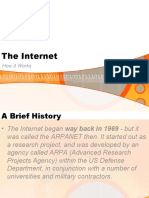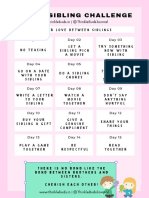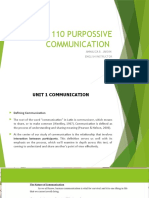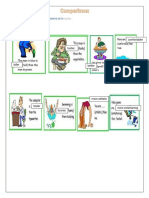0% found this document useful (0 votes)
32 views25 pagesInternet
The document provides an overview of the Internet, including its definition, types of connections, and the role of Internet Service Providers (ISPs). It explains essential terms such as the World Wide Web, web pages, URLs, and email, as well as the differences between the Internet and intranets. Additionally, it covers communication software and the basics of using email, including creating accounts and sending messages.
Uploaded by
Sundeep BaroCopyright
© © All Rights Reserved
We take content rights seriously. If you suspect this is your content, claim it here.
Available Formats
Download as PDF, TXT or read online on Scribd
0% found this document useful (0 votes)
32 views25 pagesInternet
The document provides an overview of the Internet, including its definition, types of connections, and the role of Internet Service Providers (ISPs). It explains essential terms such as the World Wide Web, web pages, URLs, and email, as well as the differences between the Internet and intranets. Additionally, it covers communication software and the basics of using email, including creating accounts and sending messages.
Uploaded by
Sundeep BaroCopyright
© © All Rights Reserved
We take content rights seriously. If you suspect this is your content, claim it here.
Available Formats
Download as PDF, TXT or read online on Scribd
/ 25





